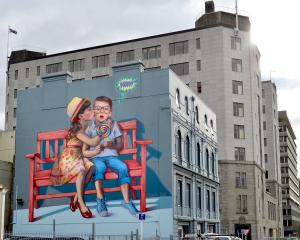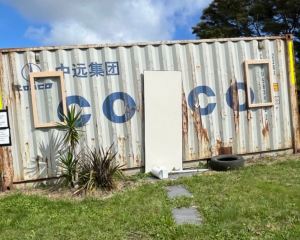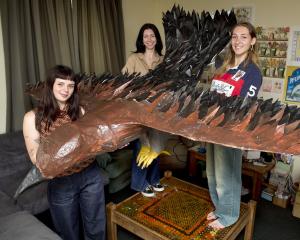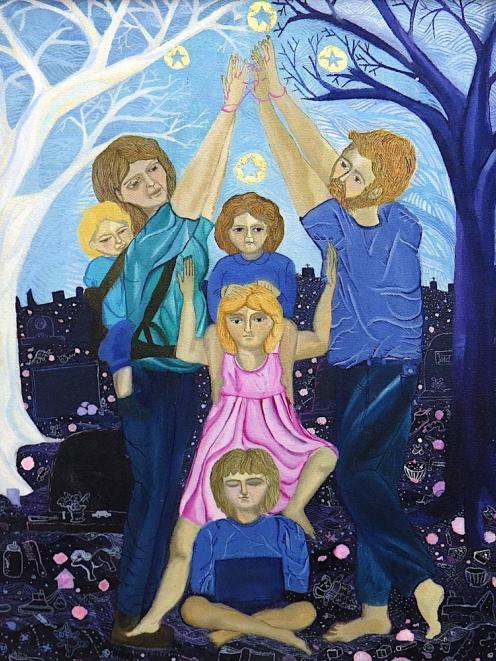
(Bellamys Gallery)
The Velvet Rope is the title of a new book of poems by Cassie Ringland-Stewart, accompanied by illustrations by Kate Stevens West. The book was launched at Bellamys Gallery, accompanied by a display of the paintings and drawings by Stevens West which formed the basis of her half of the collaboration.
Half the paintings have been made using the medium of gouache on paper; the remainder are works in acrylic on board or canvas, often accompanied by the use of gold leaf. There is no overarching pictorial theme, with each work referencing a different one of Ringland-Stewart’s poems. The paintings are intriguing pieces, largely created in a semi-naive style that also draws a lot from early Church iconography (two of the works actually use the term "Byzantine" in their titles for obvious reasons). The resulting images have a little of the feel of Mexican retablo devotional folk paintings, but also have something of a heady surrealistic feel that lies closer to the work of Chagall.
Along with the painted works, the artist has also presented a series of graphite drawings, many of which are clearly related to the paintings and are likely in several cases to have been the preliminary designs from which the paintings were created.

"Memento Vivere", Jacob Feenstra
(Gallery on Blueskin)
A naive folk-style approach is also a facet of Jacob Feenstra’s art, although to be fair this is just one of many threads that run through his large-scale exhibition at Gallery on Blueskin. In all, the artist has presented nearly 50 pieces in a bewildering array of styles and media, ranging from screen-printed slogans and collections of found objects to re-purposed cheap art prints and original oil paintings.
The works are divided roughly into three groups, with portraits occupying one room, landscape scenes of Waitati and the coast to the north forming the main part of the exhibition, and the gallery’s exterior annexe filled with more experimental pieces. The landscapes, in particular, are charming images, often depicting a small, seemingly insignificant human addition — a letterbox, a public toilet, a signpost — to an otherwise clear landscape. The works suggest a warning of our ability to fill the empty space and clutter the natural world. This theme is continued with several of the annexe works, notably three assemblages of objects found during the artist’s walks in the countryside.
The slogan works, in English, te reo and Latin, carry affirmations and warnings, some of them highly appropriate for the world of 2020, none more so that the titular Memento Mori/Memento Vivere.
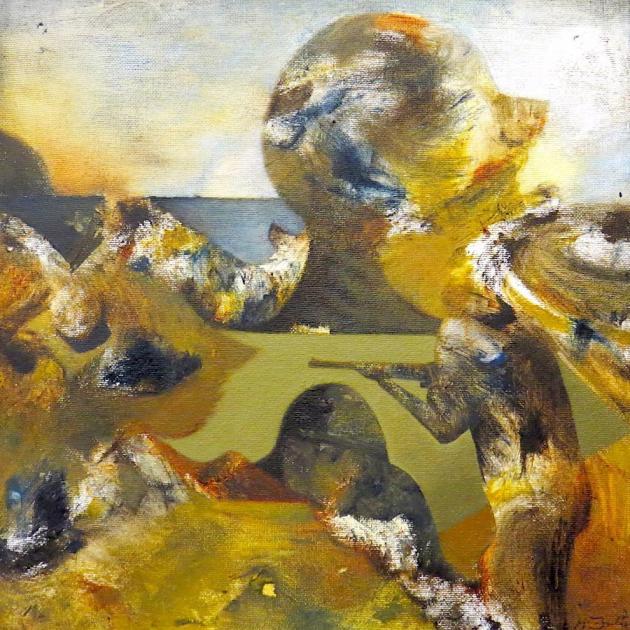
"Far North Stories", Scott McFarlane
(Pea Sea Art)
There is an astonishing air of depth and mystery to the semi-abstract landscapes of Scott McFarlane.
Painted in bold strokes over a gesso base deliberately left uneven, the works have a luminosity which intensifies the cryptic, half-glimpsed scenes depicted. Figures are often implied as much as painted, against anthropomorphic landscapes where heads are hills and hills are torsos. The dream-like landforms of master surrealist Max Ernst seem to be a touchstone, at least subconsciously, in many of these haunted scenes, and several of that artist’s techniques, such as decalcomania (the pressing of wet paint on to the canvas by a flat surface that is then quickly removed to leave a tree-like pattern) are used in McFarlane’s art. The mastery of this style to such excellent effect is impressive, as are many of the hypnotic images achieved.
Alongside these works, it would be easy to overlook three more pieces. One of these, Edible Geography, combines a series of enigmatic figures and a distant tree-lined horizon with bold fields of bright colour. The remaining pieces are two sombre landscapes in tones of sepia and bistre brown that owe a lot to Symbolist art. They are a fine illustration that there is a lot more than one string to McFarlane’s artistic bow.
James Dignan








